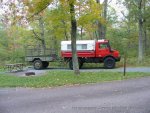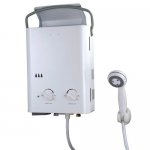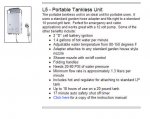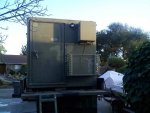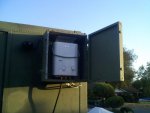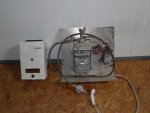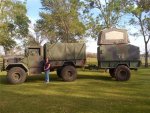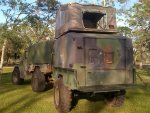Nathan,
I really like your shelter conversion project and have been following along. I contemplated an S-280 shelter for my U-1300 but then the 'perfect' Alaskan camper came along. It's hard to find the Alaskan's in 10 ft with no overhang up front, and to find one in good condition is really rare (had to go to MN for it). I like the low profile, and reduced wind load. I lost about 1 mpg when the camper went on. BTW, I get 14 mpg average now, down from about 15 before. I can get 17 mpg if I am realllllly easy on the throttle.
I'm still contemplating options for power in the Alaskan. It came wired for 110 lights and outlets and that's really handy for campground power, but most of my camping will not be in campgrounds. I have added a good deep-discharge 12 v battery and some LED lighting, sort of temporary, but here's what I'm thinking about for permanent.
I like 24 v power. The chassis is 24 v so 24 v battery pack in the camper makes sense. That was the setup in the 404 Unimog radio box.
Camper batteries would be fully charged from the truck and be ready to go when I get to the camping spot. I have a 24 to 12 converter (Wilmore brand, 35 amp) for my 12 volt ham radio needs, and keeping the 12 v battery topped up, so I can run 12 v DC lighting. With the new LED stuff available, and 12 v compact flourescent bulbs available, that takes care of lighting.
I do need 115 vac occasionally. You might also like this idea: 24 v UPS systems are cheap surplus after their batteries are dead. I have picked up a couple and they work great as 115 vac inverters. Just connect their 24v leads to the camper batteries, and get 115 vac out. The UPS's even have a battery charger included. Plug them in in the campground, or at home, and recharge or float charge the camper 24 v batteries. One thing to watch out for is the limited current rating of the UPS's charger. Charging a couple of 7 AH 12 v gel cells, typically, is much easier than charging 100 AH of big batteries! Might have to insert a little series resistance to cut the current, but prolong the charge time.
The Alaskan has 30 gallons of water on board, plus a separate water line and faucet on the sink for campground water, and a simple gray water drain out to an old Gerry water can. The toilet is a canister type. It's primarily for my wife. She refuses to go camping any more without a toilet after I dragged her out into the Rockies for an annual "Cold Butt Campout" in 22 inches of snow. Can't say I blame her. The best part, she takes care of the toilet dumping, he he. I'd rather go to the woods with a shovel.


